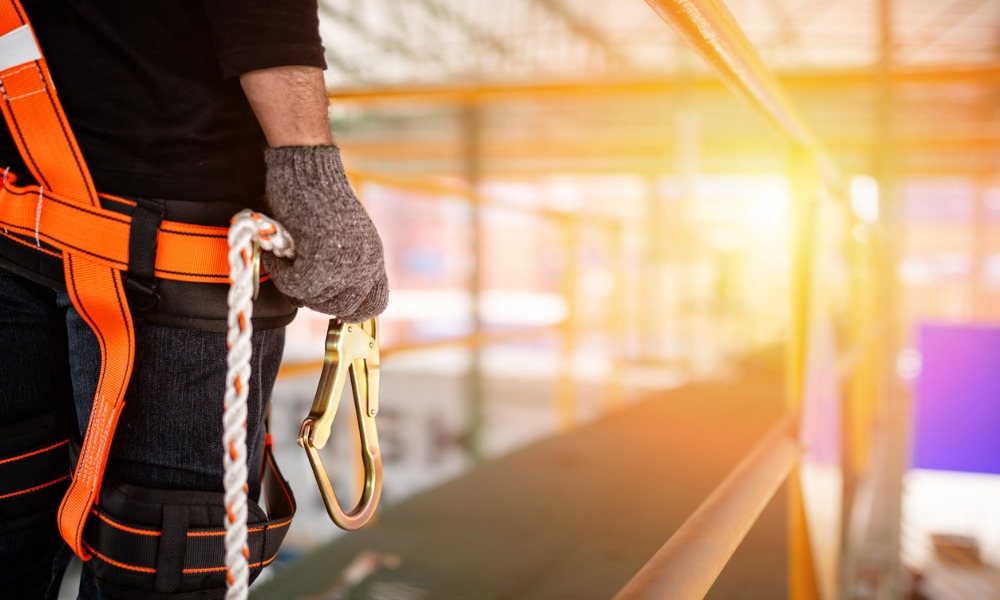Construction sites present one of the most hazardous work environments across all industries, with falls consistently ranking as the leading cause of fatalities among construction workers. Every year, hundreds of workers lose their lives due to preventable fall incidents, while thousands more suffer debilitating injuries that alter their lives permanently. The gravity of this situation demands immediate attention from employers, safety professionals, and regulatory bodies alike.
The construction industry’s unique challenges stem from its dynamic nature, where work environments constantly change, structures evolve daily, and workers must adapt to new hazards with each project phase. Unlike manufacturing or office environments where hazards remain relatively static, construction sites present moving targets of risk that require vigilant monitoring and proactive safety measures. This complexity makes fall protection not just a regulatory requirement but a moral imperative for everyone involved in construction operations.
Elevation Hazards: Understanding Multi-Level Risk Exposure
Construction work inherently involves elevation changes, creating multiple opportunities for fall incidents. Workers regularly encounter unprotected edges, temporary structures, scaffolding systems, ladders, and roof surfaces that present varying degrees of fall risk. These elevation hazards multiply throughout a project’s lifecycle, with each construction phase introducing new challenges and potential failure points.
Structural steel workers face some of the most extreme elevation risks, working hundreds of feet above ground on narrow beams with minimal margin for error. Roofing professionals encounter steep slopes, unstable surfaces, and weather-related complications that compound fall risks. Residential framers work with constantly changing floor levels and incomplete structures that lack permanent guardrails or safety systems.
The psychological aspect of elevation work cannot be overlooked, as height-related anxiety and overconfidence both contribute to fall incidents. Workers may develop a false sense of security through repeated exposure to heights, leading to complacency in safety protocol adherence. Conversely, height-phobic workers may experience performance degradation that increases their accident risk, creating additional challenges for site supervisors and safety coordinators.
Regulatory Framework: Navigating Compliance Requirements
Federal occupational safety regulations establish minimum standards for fall protection, with specific requirements varying based on work height, activity type, and industry classification. These regulations mandate fall protection systems when workers operate at heights exceeding six feet in construction activities, though many progressive contractors implement protection measures at lower elevations to maximize worker safety.
State-level regulations often supplement federal requirements with additional restrictions or clarifications tailored to local construction practices and environmental conditions. Some jurisdictions impose stricter height thresholds, expand protection requirements to additional work activities, or mandate specific training certifications for fall protection system users. Construction companies operating across multiple states must navigate these varying requirements to maintain compliance throughout their service areas.
International construction projects present additional regulatory complexities, as foreign safety standards may differ significantly from domestic requirements. Companies engaged in overseas construction must adapt their safety programs to meet local regulations while maintaining their internal safety standards, often requiring specialized training and equipment modifications to achieve compliance.
System Selection: Matching Protection to Task Requirements
Effective fall protection requires careful system selection based on specific work activities, environmental conditions, and site constraints. Personal fall arrest systems provide individual protection through full-body harnesses connected to secure anchorage points, offering maximum mobility while maintaining safety compliance. These systems excel in situations requiring worker movement across large areas with adequate overhead anchorage points.
Guardrail systems offer collective protection for multiple workers simultaneously, creating physical barriers that prevent falls without requiring individual equipment. These systems work exceptionally well for floor edges, platform perimeters, and other locations where workers perform extended activities in defined areas. Temporary guardrails must meet specific height, strength, and configuration requirements to provide adequate protection.
Safety net systems capture workers who fall, providing protection over large areas where individual or guardrail systems prove impractical. Net systems require careful installation with proper spacing, tensioning, and inspection protocols to maintain their effectiveness. These systems often complement other protection methods in comprehensive fall prevention strategies.
Training Excellence: Building Competency Through Education
Comprehensive fall protection training extends beyond basic equipment familiarization to include hazard recognition, system limitations, emergency procedures, and ongoing competency maintenance. Workers must understand not only how to use fall protection equipment correctly but also when specific systems are required, how to inspect equipment for defects, and what actions to take when problems arise.
Hands-on training components allow workers to practice equipment use in controlled environments before encountering actual workplace hazards. These practical sessions should include proper harness fitting, connector attachment, anchorage point evaluation, and rescue procedures. Regular refresher training ensures skills remain current and addresses new equipment technologies or regulatory changes.
Supervisor training programs must cover system selection criteria, inspection requirements, training oversight responsibilities, and incident investigation procedures. Supervisors need additional competencies in hazard assessment, system compatibility evaluation, and worker performance monitoring to effectively manage fall protection programs at job sites.
Equipment Reliability: Maintaining Protection System Integrity
Fall protection equipment requires rigorous inspection, maintenance, and replacement protocols to ensure continued reliability. Daily user inspections check for obvious defects, wear patterns, or damage that could compromise system performance. Workers must understand inspection criteria and removal procedures for defective equipment to prevent use of compromised protection systems.
Formal periodic inspections by competent persons provide detailed equipment evaluations using established criteria and documentation protocols. These inspections assess equipment condition, track usage patterns, and determine remaining service life to support replacement planning. Inspection records provide valuable data for equipment performance analysis and improvement initiatives.
Equipment storage and handling procedures significantly impact service life and reliability. Proper storage protects equipment from environmental damage, chemical exposure, and physical abuse that could create hidden defects. Transportation protocols prevent equipment damage during site transfers and ensure availability when needed for protection activities.
Environmental Considerations: Adapting to Changing Conditions
Weather conditions dramatically affect fall protection effectiveness and worker safety. Wind loads can destabilize temporary structures, reduce worker stability, and interfere with fall arrest system performance. Rain, snow, and ice create slippery surfaces that increase fall risks while potentially compromising equipment function through moisture infiltration or freezing.
Temperature variations affect equipment performance, with extreme cold reducing material flexibility and extreme heat accelerating degradation processes. Workers must understand temperature-related equipment limitations and modify protection strategies accordingly. Some equipment types may require replacement with temperature-resistant alternatives in extreme climate conditions.

Seasonal construction activities present varying environmental challenges requiring adaptive protection strategies. Winter work involves ice formation, reduced daylight hours, and bulky protective clothing that may interfere with fall protection equipment. Summer activities may involve high temperatures that stress equipment materials and create heat-related worker performance issues.
Emergency Response: Preparing for Fall Incidents
Despite comprehensive prevention efforts, fall incidents may still occur, requiring immediate and effective emergency response procedures. Prompt rescue operations minimize injury severity and prevent suspension trauma in workers caught in fall arrest systems. Response teams must have appropriate training, equipment, and communication systems to execute rapid rescue operations.
Emergency response plans should address various fall scenarios, including arrested falls, injured workers on elevated surfaces, and equipment failures during rescue operations. These plans must identify response team members, establish communication protocols, and specify equipment requirements for different emergency types. Regular drills ensure response teams maintain proficiency and identify plan improvements.
Medical response coordination becomes critical when fall incidents result in serious injuries requiring advanced medical care. Emergency medical services may need specialized equipment or personnel for elevated rescues, requiring advance planning and communication with local emergency responders. Helicopter landing zones, ground access routes, and medical facility locations should be predetermined and clearly marked.
Cost-Benefit Analysis: Justifying Safety Investment
Fall protection investments require financial justification in competitive construction markets, though the calculation extends beyond simple equipment costs to include training, maintenance, and administrative expenses. However, these costs pale in comparison to potential fall incident expenses, which can include medical bills, workers’ compensation claims, legal fees, regulatory fines, and project delays.
Productivity benefits often offset fall protection costs through improved worker confidence, reduced insurance premiums, and enhanced project efficiency. Workers equipped with proper fall protection can focus on their tasks without constant safety concerns, often resulting in improved work quality and faster completion times. Insurance providers may offer premium reductions for companies demonstrating strong fall protection programs.
Reputation damage from fall incidents can devastate construction companies through negative publicity, client loss, and regulatory scrutiny. EHS construction professionals understand that proactive safety investments protect company reputation while demonstrating commitment to worker welfare. This reputation protection often translates into competitive advantages when bidding on safety-conscious projects.
Continuous Improvement: Evolving Protection Strategies
Effective fall protection programs require ongoing evaluation and improvement to address changing project requirements, new equipment technologies, and lessons learned from incident analysis. Regular program audits identify strengths and weaknesses while benchmarking performance against industry standards and best practices. These evaluations should involve worker feedback, supervisor observations, and objective performance metrics.
Equipment technology continues advancing with lighter materials, improved ergonomics, and enhanced functionality that can improve worker acceptance and protection effectiveness. Companies should evaluate new technologies for potential integration into their protection programs while maintaining compatibility with existing systems and training programs.
Industry collaboration through safety organizations, trade associations, and regulatory partnerships provides valuable information sharing opportunities that benefit all construction stakeholders. Participating in safety initiatives, sharing lessons learned, and supporting research efforts contributes to industry-wide safety improvements that protect all construction workers.
Conclusion
Fall protection in construction represents one of the most critical safety challenges facing the industry today. The complexity of construction work, combined with constantly changing job sites and diverse work activities, requires comprehensive approaches that integrate regulatory compliance, equipment selection, training programs, and emergency response planning. Success in fall protection depends on leadership commitment, worker engagement, and continuous program improvement.
The financial and human costs of fall incidents far exceed the investments required for effective protection programs. Companies that prioritize fall protection not only protect their workers but also enhance their competitive position through improved productivity, reduced insurance costs, and enhanced reputation. As construction projects become increasingly complex and safety expectations continue rising, fall protection will remain a fundamental requirement for successful construction operations.
Moving forward, the construction industry must embrace innovation in fall protection technology while maintaining focus on fundamental safety principles. Training programs must evolve to address new equipment and techniques while ensuring workers understand basic safety concepts. Regulatory compliance provides the foundation, but true safety excellence requires going beyond minimum requirements to create cultures where fall protection becomes second nature for every worker on every project.



